Explore the Ottoman-Russian Wars, their causes, major battles, nationalism's role, alliances, and lasting impact on Eastern Europe and modern relations.The Ottoman-Russian Wars represent a complex narrative of imperial rivalry that spanned over a century, impacting the socio-political landscape of Eastern Europe and beyond. This multifaceted conflict, steeped in historical significance, was fueled by competing ambitions, nationalism, and strategic alliances. The struggle involved key battles and diplomatic efforts that not only shaped the destinies of the Ottoman and Russian Empires but also left a lasting legacy on modern international relations. As we delve into the intriguing aspects of the Ottoman-Russian Wars—from their historical context to the intricate roles of religion and nationalism—we unravel the lessons learned that resonate even today. Join us on a journey through this turbulent era, exploring the conflicts that forged two great empires and the implications that still echo in our present times.
Overview of The Ottoman-Russian Wars' Historical Context
The Ottoman-Russian Wars were a series of military conflicts that spanned over two centuries, primarily during the 17th to the 19th centuries. These wars stemmed from the geopolitical ambitions of both the Ottoman Empire and the Russian Empire, as they sought to expand their territories and influence in Eastern Europe and the Black Sea region.
The historical context of these conflicts is rooted in the decline of the Ottoman Empire's power, which created a vacuum that the Russian Empire sought to exploit as it embarked on its campaign to become the dominant power in Eastern Europe. The struggle for control of strategic waterways, such as the Black Sea and the Dardanelles, added another layer of complexity to the already fraught relations between these two empires.
As nationalism began to rise among various ethnic groups within the Ottoman territory, the desire for independence clashed with Ottoman rule, feeding into the broader ambitions of Russia that aimed to position itself as a protector of Orthodox Christians in the region. This interplay of imperial aspirations, territorial ambitions, and nationalistic desires set the stage for a prolonged period of conflict and tension.
In summary, the historical context of the Ottoman-Russian Wars is characterized by a tumultuous interplay of power, territorial disputes, and the quest for dominance that defined the relations between these two great empires.
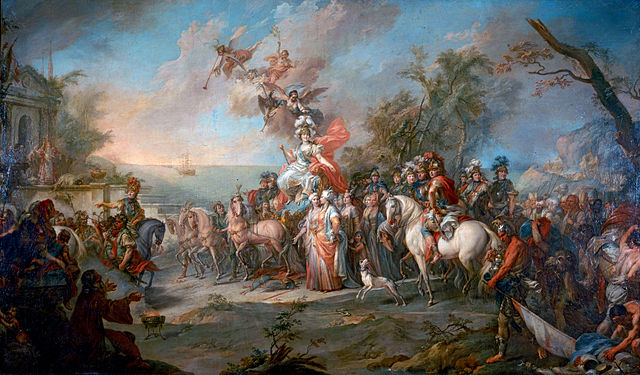
Key Causes of Conflict Between The Ottoman and Russian Empires
The conflicts between The Ottoman-Russian Empires were primarily driven by a complex interplay of political, territorial, and economic factors. Understanding these root causes provides insight into the overarching themes of the wars.
One of the principal causes was the struggle for territorial expansion. The Ottoman Empire aimed to consolidate control over the Balkans while Russia sought to expand its influence into the Black Sea region and beyond. This competition for land exacerbated existing tensions and often resulted in military confrontations.
Another significant factor was the issue of religious and ethnic identity. The Ottoman Empire was predominantly Islamic, while Russia was primarily Orthodox Christian. The desire to protect fellow Christians within Ottoman territories fueled Russian intervention, portraying their military actions as protective measures. This sentiment often resonated well with the Russian populace, reinforcing the narrative of a civilizing mission against the Islamic Ottomans.
Furthermore, the balance of power in Europe played a critical role. As the two empires vied for dominance, their conflicts were often intertwined with the interests of Western European powers. Strategic alliances were formed and dissolved, significantly impacting the course of the wars. For instance, the Great Powers often supported one side or the other, either to curb Ottoman influence or to contain Russian expansion.
Economic interests also contributed to the conflicts. Control over trade routes in the Black Sea and the Mediterranean was vital to both empires. Disputes over trade and commerce frequently escalated into military engagements, as both empires sought to secure their economic interests against the rival.
In conclusion, the key causes of conflict between the Ottoman and Russian Empires can be attributed to territorial ambitions, religious and ethnic dynamics, the influence of European powers, and economic competition. This multifaceted struggle set the stage for a century of conflict marked by shifting alliances and profound historical implications.
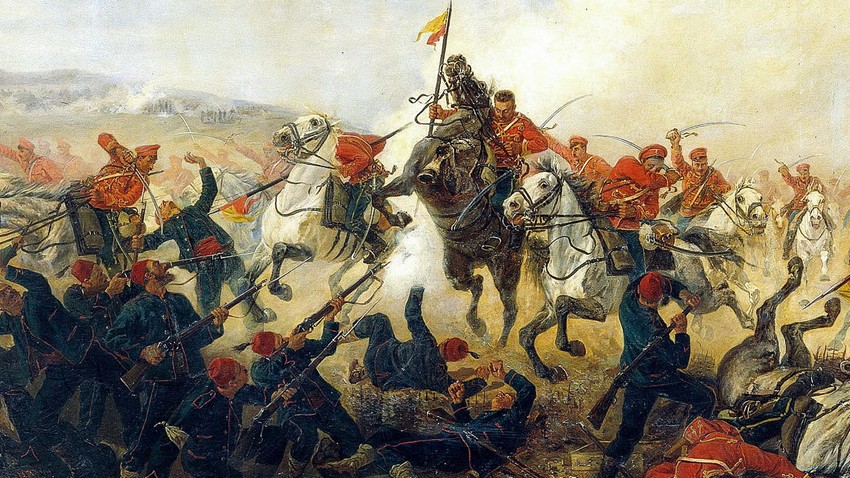
Major Battles in The Ottoman-Russian Conflicts
Throughout the century-long conflicts between the Ottoman and Russian Empires, several key battles played significant roles in shaping the outcomes of their confrontations. These battles not only highlighted the military capabilities of the two empires but also reflected the broader geopolitical landscapes of their time.
- The Battle of Khotyn (1621): This battle marked a crucial moment in the early stages of the Ottoman-Russian Wars, as Polish and Ottoman forces clashed with the Russians, leading to a stalemate that maintained the status quo in the region.
- The Battle of Podhajce (1672): A decisive battle that showcased the Ottomans' military strength, resulting in a significant defeat for the Russian forces and temporarily solidifying Ottoman power in Eastern Europe.
- The Battle of Azov (1696): This battle was part of the larger struggle for control of the Black Sea region. The Ottomans suffered a loss to Russian forces, marking a turning point that began to shift the balance of power.
- The Siege of Ochakov (1788): A significant encounter where the Russian Navy played a predominant role, leading to a successful assault on the Ottoman fortress and showcasing the growing maritime capabilities of the Russian Empire.
- The Battle of Sinop (1853): Often regarded as one of the most important naval battles during the Crimean War, this conflict illustrated the might of the Russian fleet against the Ottomans, influencing further engagements in the war.
- The Battle of Balaklava (1854): As part of the Crimean War, this battle revealed not only the complexities of alliance politics but also the resilience of the Ottoman forces, who fought alongside the British and French against Russian advances.
Each of these battles contributed to the evolving nature of the relationship between the two empires. The tactical decisions made during these conflicts played a crucial role in shaping the future diplomatic and military strategies of both the Ottoman-Russian front and their neighboring states.
The Role of Nationalism in The Ottoman-Russian Struggles
The rise of nationalism played a pivotal role in shaping the dynamics of the The Ottoman-Russian Wars. During the 19th century, the emergence of national identities among various ethnic groups within the Ottoman Empire and the Balkans fueled aspirations for independence and autonomy, ultimately complicating the conflict between the two empires.
Nationalism in the Balkans, particularly among Slavic peoples, was closely linked to Russian support, as Russia viewed itself as the protector of Slavic Christians under Ottoman rule. This sentiment was especially pronounced during the Balkan uprisings, where the concept of a united Slavic identity motivated many to revolt against Ottoman authority. Russia's military interventions during these uprisings were often justified by the narrative of defending fellow Slavs, further inflaming nationalist sentiments.
For the Ottomans, the rise of nationalism represented a direct challenge to their imperial authority. Efforts to suppress these movements often led to violent confrontations and revolts, which not only weakened the empire but also prompted a sense of urgency in the Russian leadership to capitalize on these internal divisions. The The Ottoman-Russian Wars thus became a battleground not only for territorial disputes but also for the influence of national identities.
The war of 1877-1878 is a significant example, as it was spurred by nationalistic fervor among Balkan states seeking independence. The resulting Treaty of San Stefano and the Congress of Berlin redrew the map of the region, recognizing several new states, and showcased how nationalism could reshape geopolitical landscapes.
In summary, nationalism was a driving force that impacted both the motivations and outcomes of the The Ottoman-Russian Wars. It revealed the fragility of empires in the face of emerging national identities, ultimately leading to profound changes in Eastern Europe and contributing to the weakening of the Ottoman Empire in the long term.
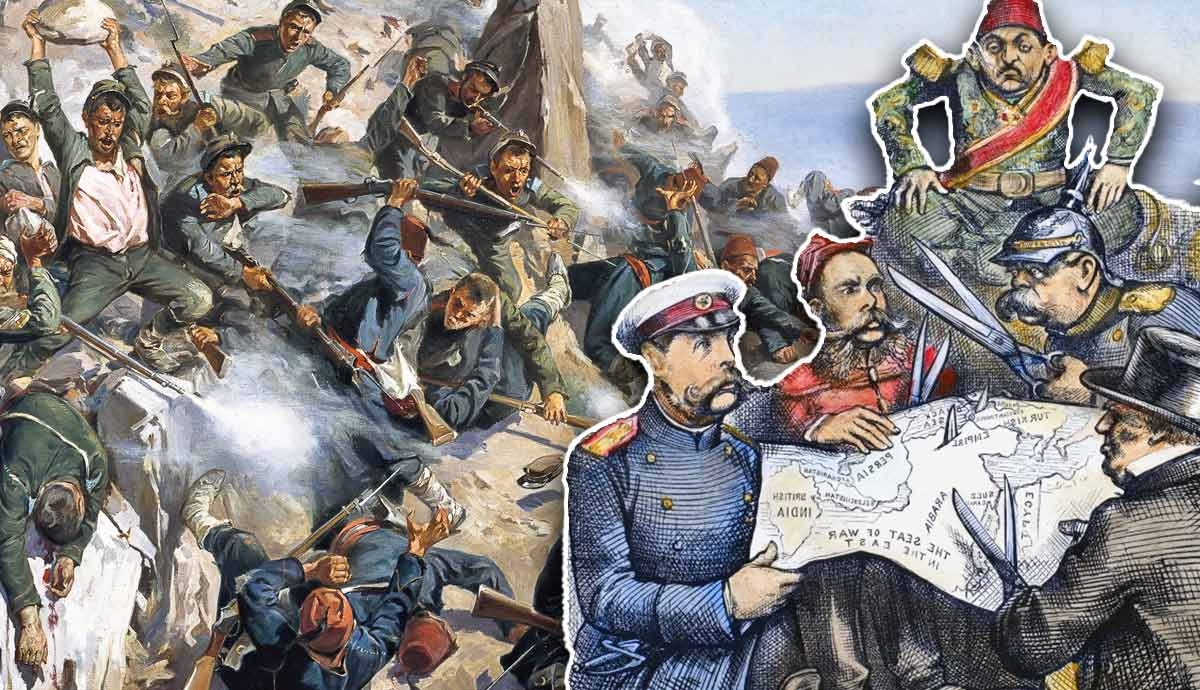
Strategic Alliances Formed During The Ottoman-Russian Wars
The conflicts between the Ottoman-Russian Empires during the centuries of warfare were not only marked by direct confrontations but also by a series of strategic alliances that altered the balance of power in Eastern Europe and the Middle East. These alliances were often formed out of necessity, driven by common interests or mutual threats.
One of the most notable alliances during the Ottoman-Russian Wars was between the Russians and various Balkan states. The Russians positioned themselves as the protectors of Orthodox Christians in the Ottoman Empire, which garnered them support from nations like Serbia and Bulgaria. This alliance aimed at undermining Ottoman authority in the Balkans and was a significant factor in the Russo-Turkish Wars.
In contrast, the Ottomans sought alliances with Western European powers. Countries like France and Britain offered military support to the Ottomans in various conflicts, viewing the Russians as a common threat to European stability. This cooperation often included military aid, economic support, and diplomatic engagements.
| Alliance | Participants | Purpose |
|---|---|---|
| Russian-Balkan Alliance | Russia, Serbia, Bulgaria | Support Orthodox Christian independence from Ottoman rule |
| Ottoman-Western Alliance | Ottoman Empire, France, Britain | Counter Russian expansion in Eastern Europe |
These strategic alliances significantly shaped military strategies and outcomes throughout the Ottoman-Russian Wars. They not only influenced battlefield tactics but also affected the political landscape and led to shifts in territorial control. Over time, the shifting allegiances and betrayals contributed to the long-standing historical tensions between the empires and their respective allies.
As the Ottoman-Russian conflicts progressed, the lessons learned from these alliances echoed into future diplomatic relations, underscoring the importance of strategic partnerships in international conflicts.
Impact of The Ottoman-Russian Wars on Eastern Europe
The conflicts between the Ottoman and Russian Empires, collectively known as The Ottoman-Russian Wars, had profound implications for the political, social, and economic landscapes of Eastern Europe. These wars not only shaped the borders of nations but also influenced the power dynamics and relationships among various ethnic groups within the region.
One significant impact was the redrawing of territorial boundaries. As a result of several treaties, such as the Treaty of Küçük Kaynarca in 1774, territories were ceded and gained, leading to increased Russian influence in the Black Sea region and weakening Ottoman control over its European provinces. This shift laid the groundwork for future national movements among various ethnicities within the Ottoman Empire, particularly the Slavic and Balkan populations.
Another crucial aspect was the emergence of nationalism in Eastern Europe. The wars galvanized various ethnic groups to seek greater autonomy or outright independence from imperial rule. This was particularly evident in the Balkans, where the weakening of Ottoman authority encouraged nationalist uprisings and revolutions throughout the 19th century, ultimately contributing to the Balkan Wars and the reshaping of Eastern European politics.
Additionally, the repercussions of the The Ottoman-Russian Wars extended to economic dimensions. The destruction wrought by battles led to significant economic disruptions in many areas, impacting trade routes and local economies. Furthermore, the wars resulted in demographic shifts as populations moved due to conflict, persecution, or the promise of better opportunities in the wake of significant territorial changes.
In the broader scope of international relations, these conflicts exemplified the strategic rivalries and alliances characteristic of the era. The power vacuum left by the declining Ottoman Empire allowed other nations, such as Austria and Britain, to assert their interests in the region, leading to a complex web of alliances and enmities that would influence European politics for decades to come.
In conclusion, the impact of the The Ottoman-Russian Wars on Eastern Europe cannot be overstated. These conflicts significantly altered political boundaries, fostered nationalist sentiments, disrupted economies, and reshaped the region's geopolitical landscape, with effects that resonate even in contemporary discussions about Eastern European identity and sovereignty.
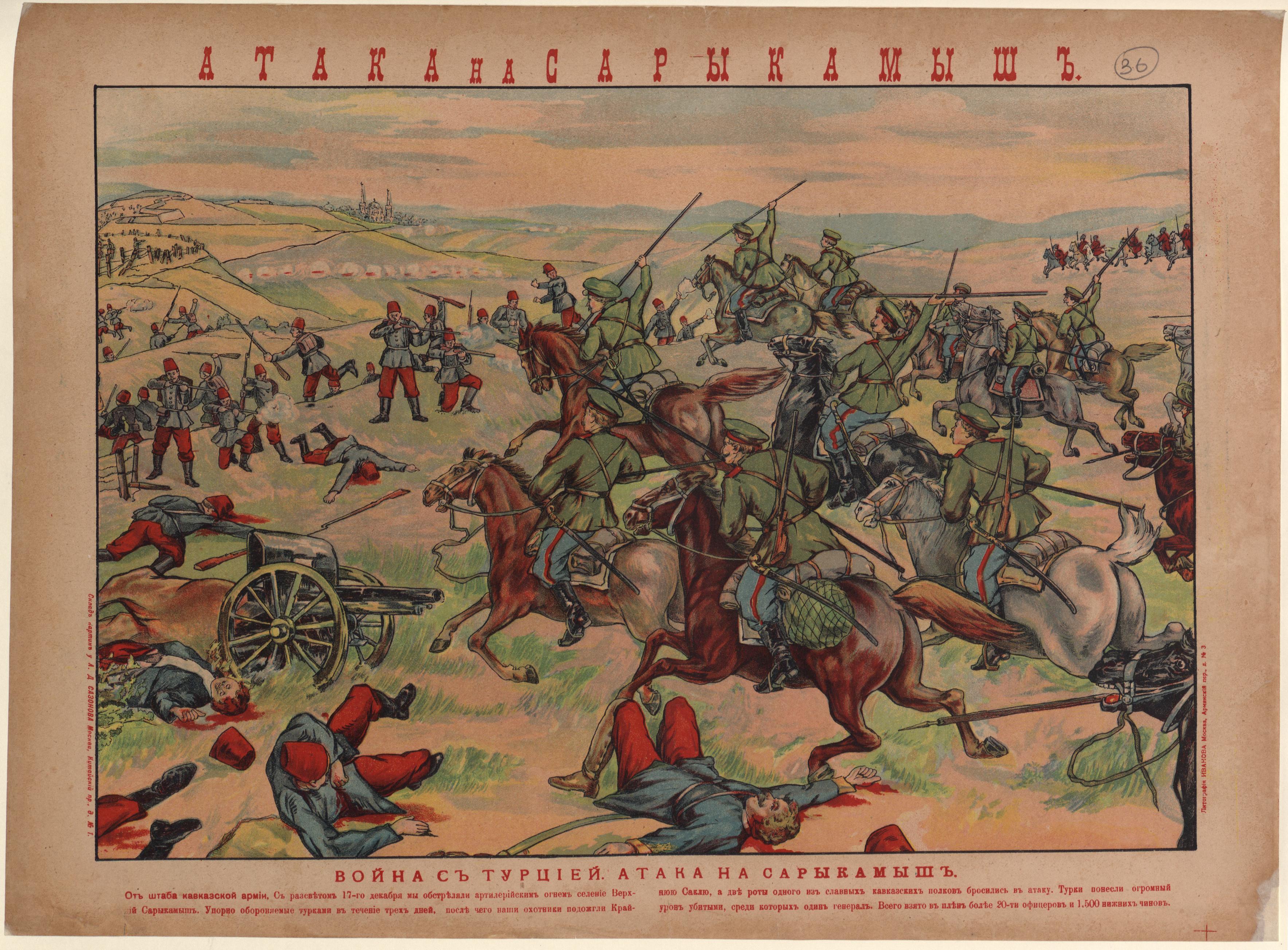
Diplomatic Efforts to Resolve The Ottoman-Russian Tensions
The Ottoman-Russian conflicts spanned several centuries, resulting in numerous battles and deep-rooted animosities between the two empires. However, amid the warfare, there were significant diplomatic efforts aimed at pacifying tensions and establishing a degree of cooperation.
One of the major diplomatic initiatives was the Treaty of Küçük Kaynarca in 1774, which marked a turning point in relations. This treaty not only recognized the independence of the Crimean Khanate but also granted the Russians privileges in the Ottoman Empire, including access to trade and the right to protect Orthodox Christians. Such agreements, while beneficial to Russia, often left the Ottomans feeling marginalized and led to further grievances.
| Year | Treaty/Agreement | Key Provisions |
|---|---|---|
| 1774 | Treaty of Küçük Kaynarca | Recognition of the Crimea's independence, Russian access to trade, protection of Orthodox Christians. |
| 1806-1812 | Treaty of Bucharest | Expansion of Russian territories in the Balkans, reaffirmation of Ottoman sovereignty. |
| 1878 | Treaty of Berlin | Revised the boundaries in the Balkans, granting autonomy to several regions. |
Furthermore, at various diplomatic conferences in the 19th century, such as the Congress of Vienna (1814-1815) and the aforementioned Treaty of Berlin (1878), the international community attempted to mediate the Ottoman-Russian disputes. These conferences aimed at restoring order in Europe following the Napoleonic Wars frequently addressed the question of the Ottoman-Russian relationship, emphasizing the need for a balance of power in the region.
Despite these efforts, the fundamental issues remained unresolved. Nationalist movements within the Balkans and the Caucasus, spurred by both empires' policies, continued to generate friction. However, these diplomatic interactions laid down a framework for communication that was essential in later years, as both empires recognized the necessity of dialogues in managing their complex relations.
In conclusion, while the Ottoman-Russian wars were marked by significant bloodshed and territorial disputes, the diplomatic efforts initiated throughout this tumultuous century provided crucial lessons in the importance of negotiation and compromise in international relations. The legacy of these attempts can still be observed in contemporary diplomatic practices within conflict-heavy regions today.
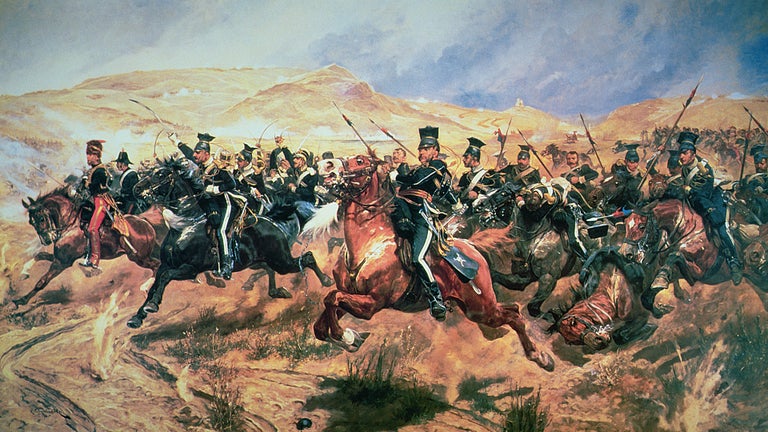
The Role of Religion in The Ottoman-Russian Wars
The The Ottoman-Russian Wars were not only territorial conflicts but also deeply rooted in religious differences and the influence of religion on national identity. The two empires, characterized by distinct religious beliefs, often found their military confrontations intertwined with the quest for religious supremacy and control over religious populations.
At the core of the conflict was the predominantly Muslim Ottoman Empire, which ruled over a diverse population that included various Christian groups, and the Orthodox Christian Russian Empire, which sought to protect and expand the influence of Orthodox Christianity among Slavic nations. This religious dynamic fueled many aspects of their wars, serving both as a source of motivation for military campaigns and as a catalyst for public support.
Throughout the centuries of conflict, key initiatives were often framed in religious terms. For instance, Russian leaders presented their military actions as a defense of Orthodox Christians under Ottoman rule, which was seen as a moral obligation. This narrative endeared them to the Slavic population, providing a powerful rallying cry for their campaigns against the Ottomans. In contrast, the Ottomans viewed themselves as the defenders of Islam, tasked with the protection of the Muslim communities in the Balkans and nurturing the Islamic faith across their territories.
| Event | Description | Religious Aspect |
|---|---|---|
| Siege of Azov (1696) | Ottoman blockade of Russian forces. | Struggle for Orthodox Christian prominence in the region. |
| Russo-Turkish War (1877-1878) | Key battles for control over Balkans. | Emphasis on protecting Christian populations. |
| Balkan Wars (1912-1913) | Final wars of the Ottoman Empire. | Strengthening Christian states against Ottoman domination. |
Religious leaders also played critical roles in mobilizing support for these wars. Both the Ottoman Sultan and the Russian Tsar used their positions as religious leaders to garner loyalty from their subjects, thus intertwining the fabric of religion with nationalism and imperial ambition.
In conclusion, the role of religion in the The Ottoman-Russian Wars was significant in shaping the political landscape and societal attitudes. The interplay of religious identity and imperial agendas fueled hostilities and fostered a legacy of division that would have lasting impacts, extending well beyond the conflicts themselves. Understanding this crucial element enhances our grasp of the complexities that characterized the interactions between these two formidable empires.
Consequences of The Ottoman-Russian Wars for Both Empires
The Ottoman-Russian Wars had far-reaching consequences that altered the political landscape of both empires and their respective regions. For the Ottoman Empire, these conflicts marked the beginning of a slow but steady decline in its territorial integrity and influence in Eastern Europe and the Balkans. The series of defeats at the hands of the Russians undermined the empire's authority and brought to light internal weaknesses, prompting a series of military and administrative reforms, known as the Tanzimat, aimed at modernizing the state’s institutions.
Conversely, the Russian Empire emerged as a significant power broker in Eastern Europe following the wars. Victories from the conflicts expanded Russian territories, particularly in the Black Sea region, which enhanced its security and influence over the Balkans. Furthermore, the wars incited a sense of nationalism among various ethnic groups under Ottoman rule, leading to uprisings and movements that ultimately contributed to the disintegration of the imperial structure over the following century.
The economic impacts were also profound; for the Ottoman Empire, military expenditures strained resources, leading to increased taxation and economic distress among its subjects. In contrast, Russia utilized its gains to boost its economy and military capabilities, leading to a more formidable presence in European affairs.
Ultimately, the Ottoman-Russian Wars not only reshaped the borders and political dominions of these two empires but also set the stage for the emergence of new national identities, paving the way for future conflicts in the region. These consequences underline the intricate relationship between war, power dynamics, and national identities in shaping the course of history.
Lessons Learned from The Ottoman-Russian Conflicts for Modern Relations
The tumultuous history of the The Ottoman-Russian Wars offers valuable insights for contemporary international relations. Here are some key lessons that can be drawn from these historical conflicts:
- Understanding Nationalism: The rise of nationalism played a significant role in the The Ottoman-Russian conflicts. Countries today need to recognize the power of national identity and aspirations as critical factors in diplomatic relations.
- Importance of Dialogue: Many of the tensions in the past stemmed from a lack of communication. Modern nations can learn that engaging in continuous dialogue can prevent misunderstandings and potential conflicts.
- Strategic Alliances: Both empires formed various alliances, showcasing the importance of partnerships in a multipolar world. Establishing strong, strategic alliances can strengthen a nation’s position and stability.
- Impact of Religion: Religion significantly influenced motivations and public sentiment during the The Ottoman-Russian Wars. Acknowledging and respecting religious dynamics remain essential in today’s global politics.
- Consequences of Warfare: The long-term implications of war on societies, economies, and political landscapes should be a deterrent for nations today. Understanding the pain and divisions caused by armed conflict is critical for promoting peace.
- Cultural Sensitivity: The The Ottoman-Russian struggles remind us that cultural factors can spark conflict. Engaging with respect for diverse cultures is paramount in preventing future tensions.
- Historical Memory: The legacy of past conflicts can shape current relationships. Nations should be aware of historical grievances and work towards reconciliation to prevent recurrence of conflicts.
By reflecting on these lessons from the The Ottoman-Russian Wars, modern states can forge healthier, more constructive relationships while navigating complex international landscapes.
Frequently Asked Questions
What were the main causes of the Ottoman-Russian Wars?
The primary causes of the Ottoman-Russian Wars included territorial disputes, competition for influence over the Black Sea region, and control of trade routes, as both empires sought to expand their territories and power.
How many significant wars took place between the Ottoman Empire and Russia?
There were several significant wars fought between the Ottoman Empire and Russia, with the most notable being the wars in the 18th and 19th centuries, including the Russo-Turkish Wars.
What impact did the Ottoman-Russian Wars have on Europe?
The wars significantly altered the balance of power in Eastern Europe, leading to shifts in alliances and territorial boundaries, which ultimately contributed to the socio-political landscape leading up to World War I.
How did the Russian Empire benefit from its wars with the Ottomans?
The Russian Empire expanded its territory, gaining critical access to warm-water ports in the Black Sea, which facilitated trade and military movement, and cemented its status as a major European power.
What role did nationalism play in the Ottoman-Russian Wars?
Nationalism played a key role as both empires sought to gain the loyalty of various ethnic groups within their borders. The wars often fueled nationalist sentiments in the Balkans and among Slavic peoples.
What were the outcomes of the Treaty of Küçük Kaynarca?
The Treaty of Küçük Kaynarca, signed in 1774, marked a significant defeat for the Ottomans, granting Russia important territorial concessions and the right to protect Orthodox Christians within the Ottoman Empire.
How did these wars contribute to the decline of the Ottoman Empire?
The continual military defeats, economic strains, and territorial losses from the Ottoman-Russian Wars weakened the central authority of the Ottoman Empire, leading to its gradual decline and loss of influence in the region.

